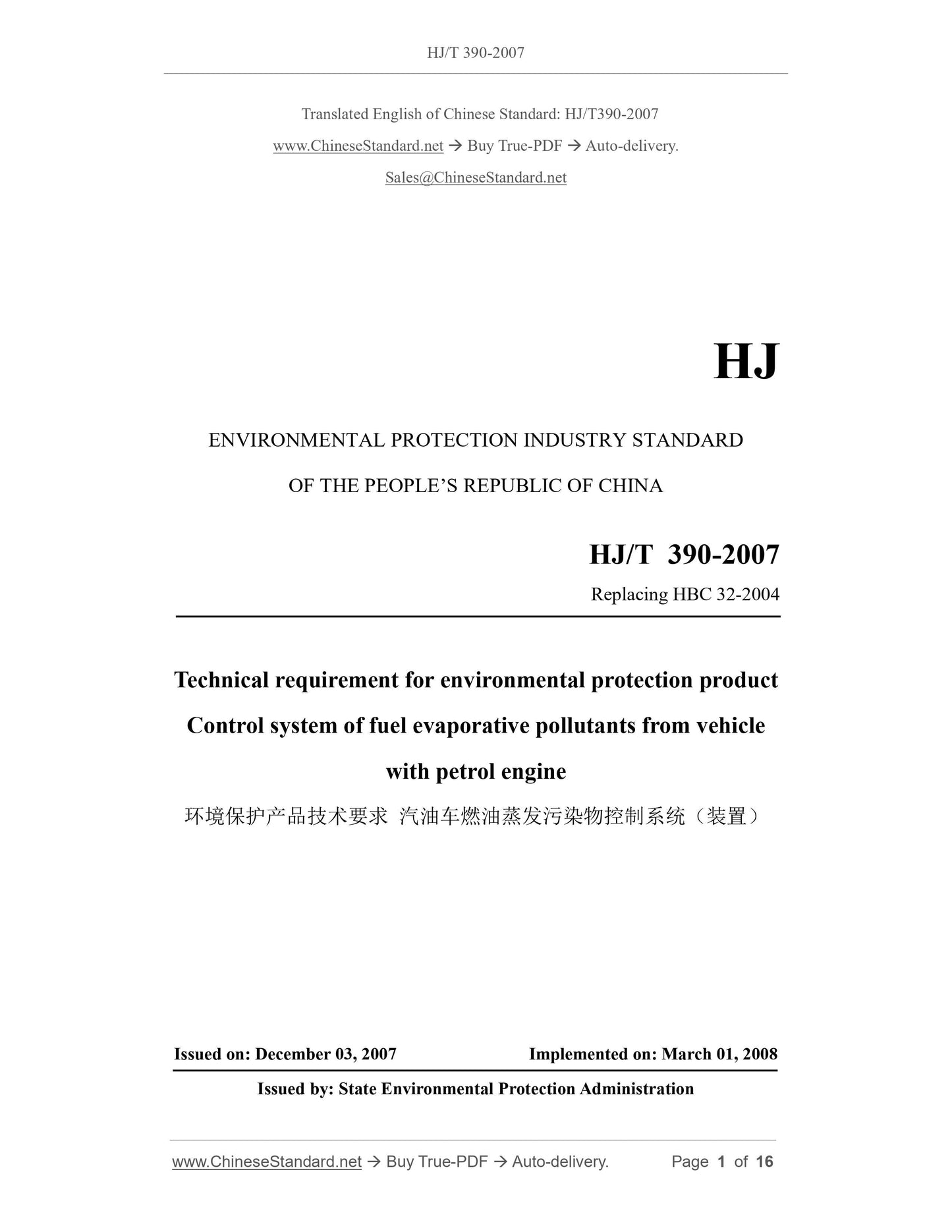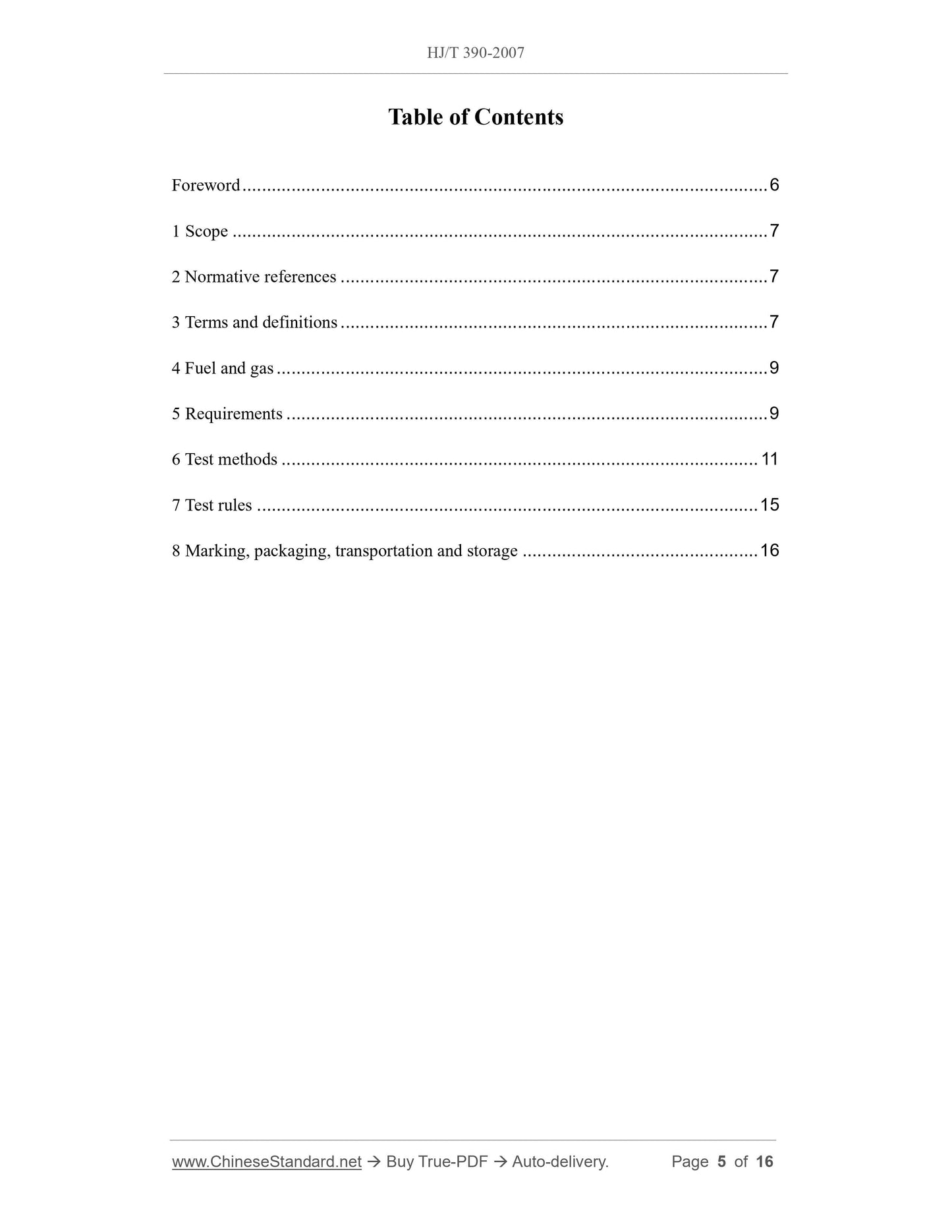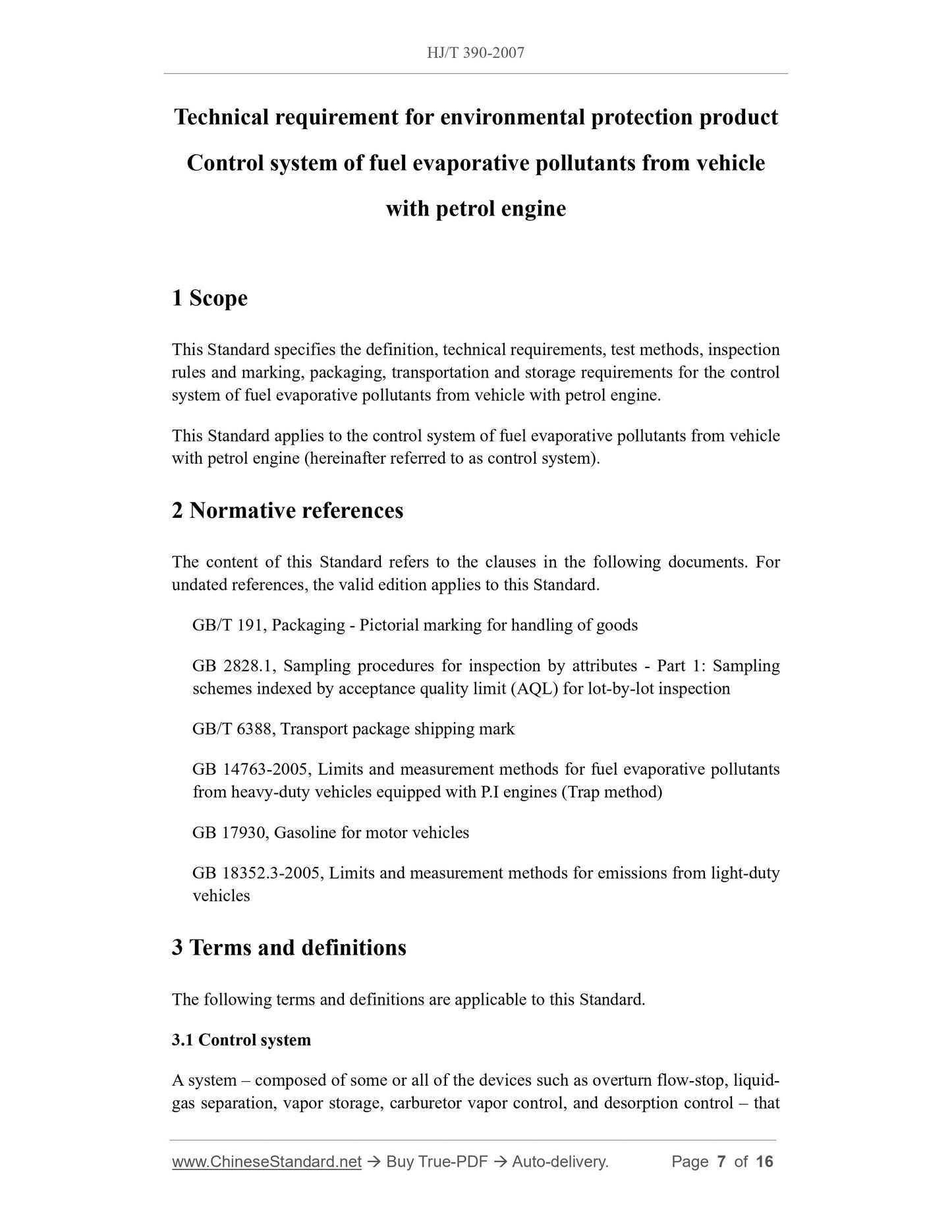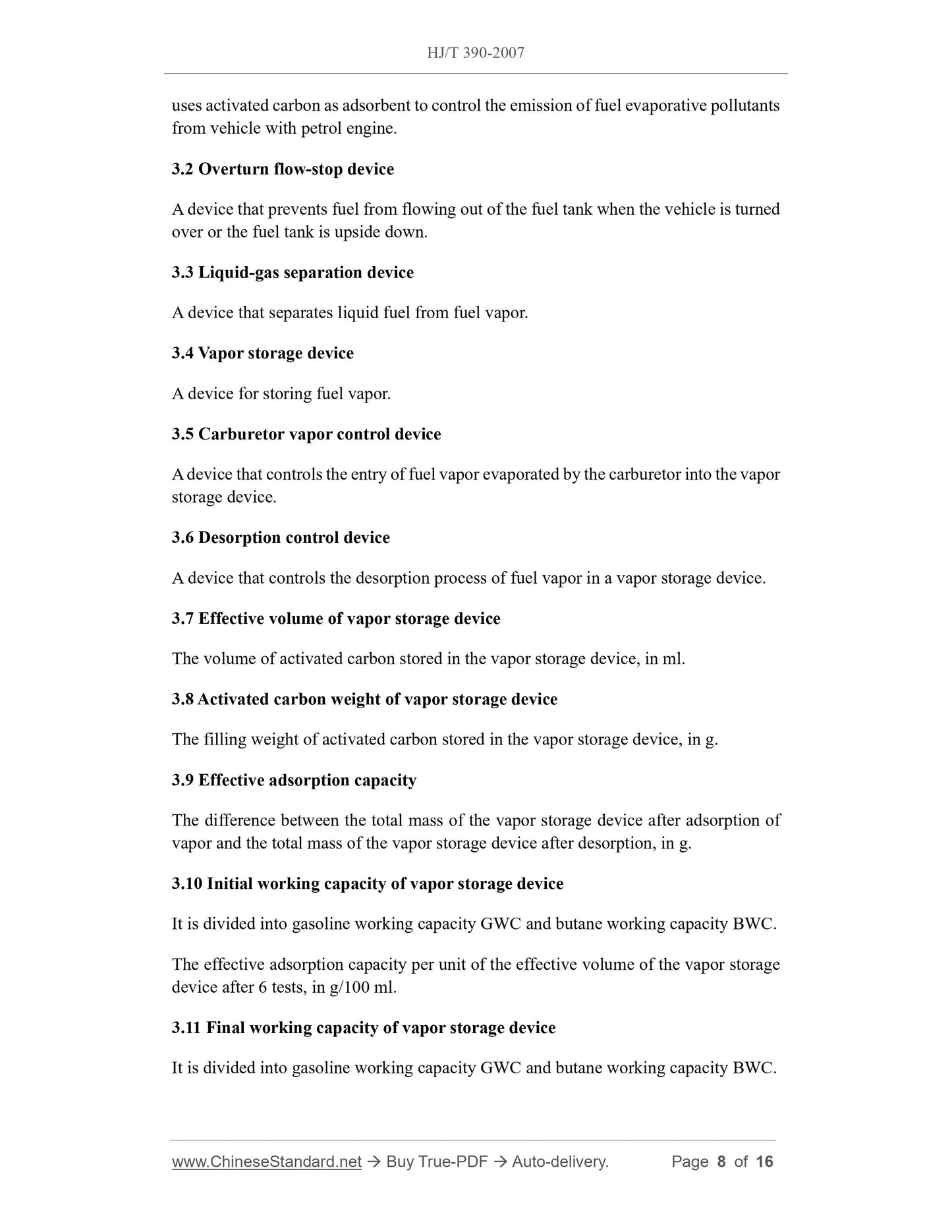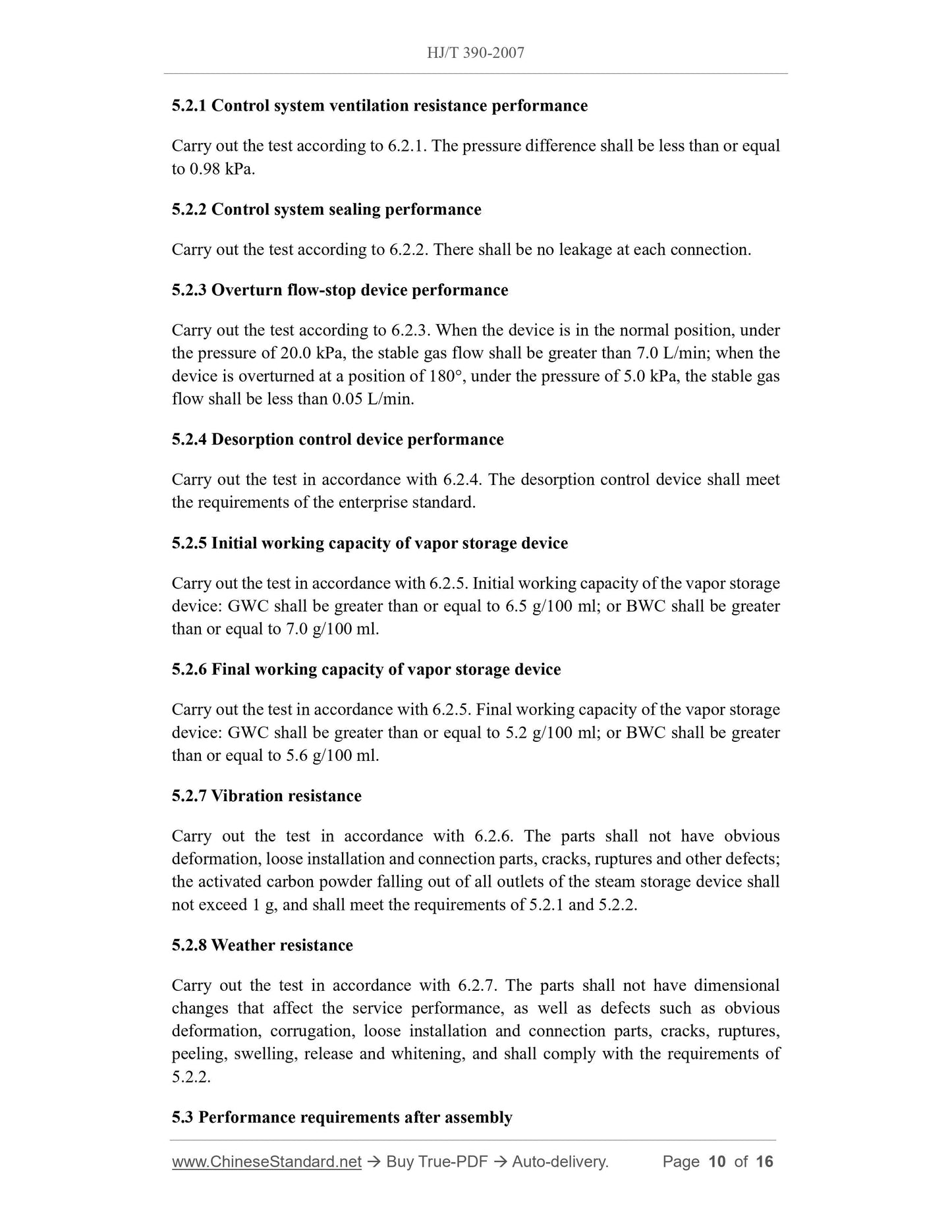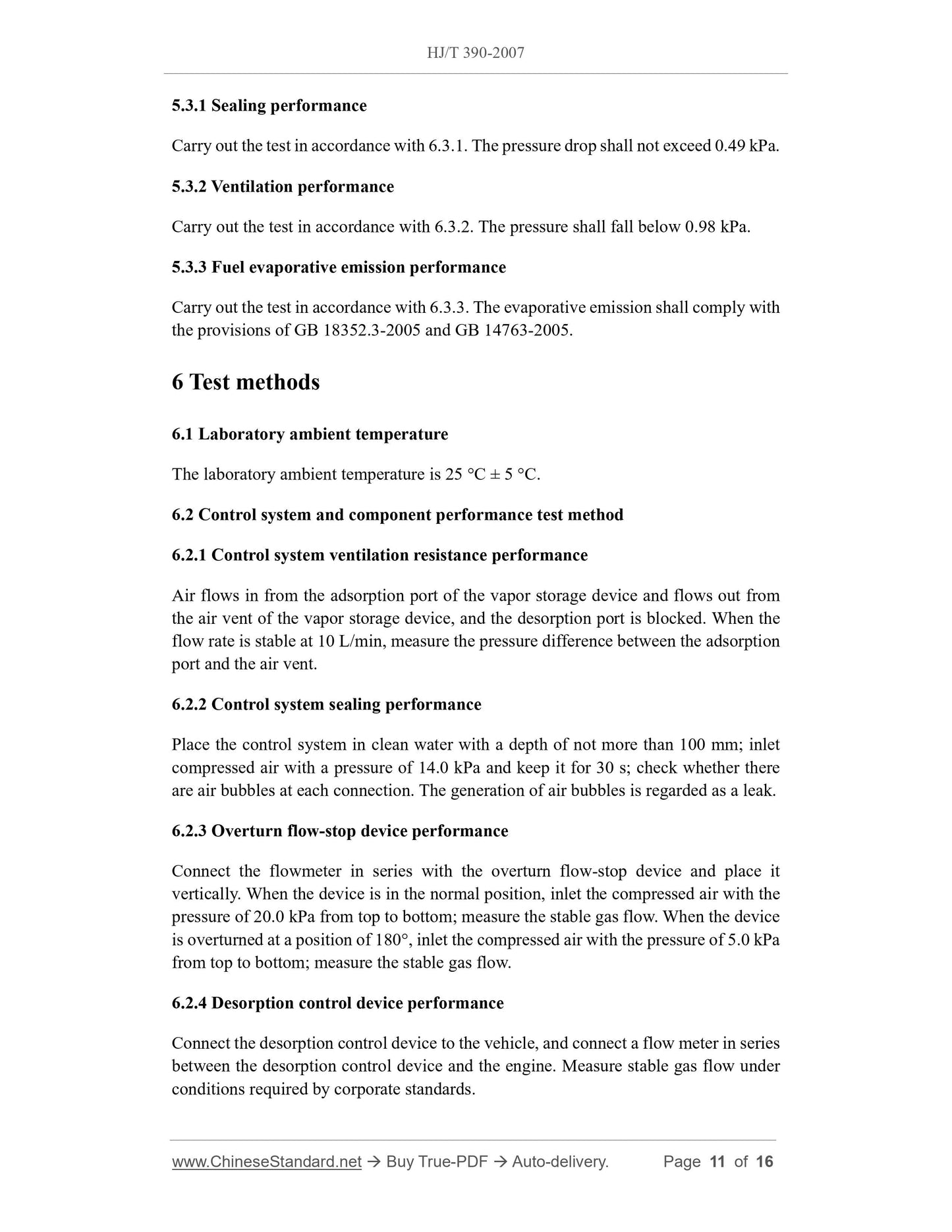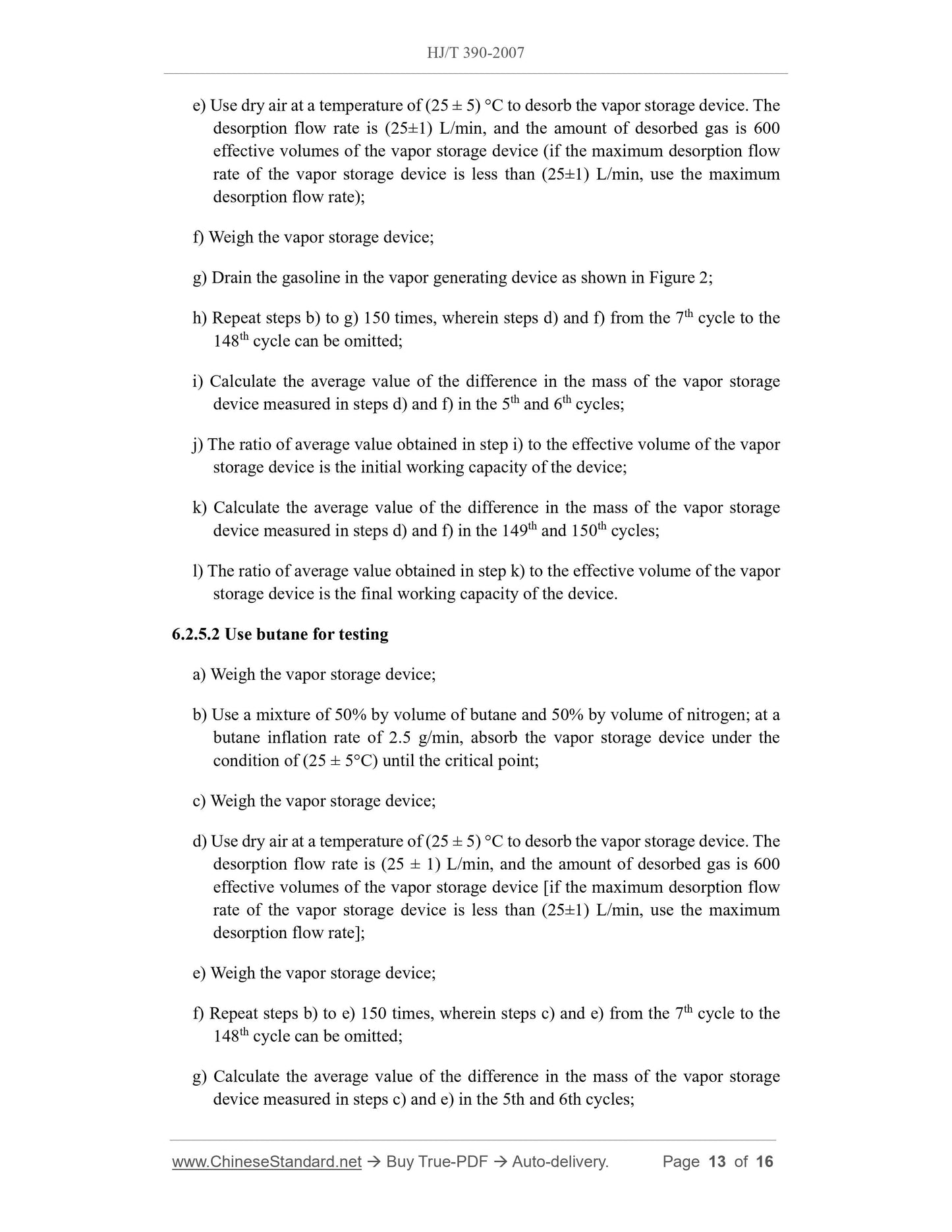1
/
of
7
www.ChineseStandard.us -- Field Test Asia Pte. Ltd.
HJ/T 390-2007 English PDF (HJ/T390-2007)
HJ/T 390-2007 English PDF (HJ/T390-2007)
Regular price
$310.00
Regular price
Sale price
$310.00
Unit price
/
per
Shipping calculated at checkout.
Couldn't load pickup availability
HJ/T 390-2007: Technical requirement for environmental labeling products - Control system of fuel evaporative pollutants from vehicle with petrol engine
Delivery: 9 seconds. Download (and Email) true-PDF + Invoice.Get Quotation: Click HJ/T 390-2007 (Self-service in 1-minute)
Newer / historical versions: HJ/T 390-2007
Preview True-PDF
Scope
This Standard specifies the definition, technical requirements, test methods, inspectionrules and marking, packaging, transportation and storage requirements for the control
system of fuel evaporative pollutants from vehicle with petrol engine.
This Standard applies to the control system of fuel evaporative pollutants from vehicle
with petrol engine (hereinafter referred to as control system).
Basic Data
| Standard ID | HJ/T 390-2007 (HJ/T390-2007) |
| Description (Translated English) | Technical requirement for environmental labeling products - Control system of fuel evaporative pollutants from vehicle with petrol engine |
| Sector / Industry | Environmental Protection Industry Standard (Recommended) |
| Classification of Chinese Standard | Z60 |
| Classification of International Standard | 13.040.50 |
| Word Count Estimation | 12,159 |
| Date of Issue | 2007-12-03 |
| Date of Implementation | 2008-03-01 |
| Older Standard (superseded by this standard) | HBC 32-2004 |
| Quoted Standard | GB/T 191; GB 2828.1; GB/T 6388; GB 14763-2005; GB 17930; GB 18352.3-2005 |
| Regulation (derived from) | SEPA Notice No. 77 of 2007 |
| Issuing agency(ies) | Ministry of Ecology and Environment |
| Summary | This standard specifies the gasoline vehicle fuel evaporative pollutant control system definition, technical requirements, test methods, inspection rules and signs, packaging, transportation and storage requirements. This standard applies to gasoline fuel evaporative control system contaminants. |
Share
